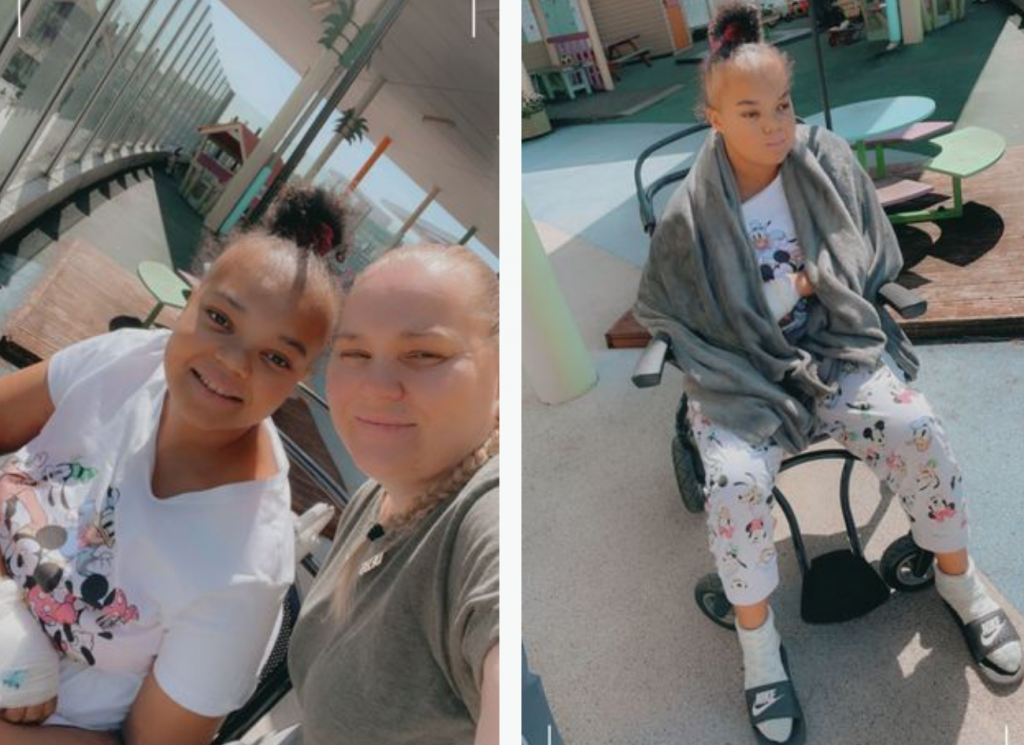A Family's Hope
- 13-year-old Ruby Chiege came home from school one day with pain in her legs. 24 hours later, her mother received the shocking diagnosis that her daughter had leukemia.
- Ruby had to spend four months in the hospital undergoing chemotherapy, and now needs a life-saving bone marrow transplant to help get her through this. Her brother Rio, age 9, was a match, and is bravely helping his sister in the biggest possible way as her donor.
- Leukemias are cancers that start in the blood-forming cells of the bone marrow. When these cells become leukemic, they stop maturing properly and grow out of control. Symptoms to look out for include: bone pain, fatigue, bleeding or bruising easily, fever, and losing weight without trying.
Debra, 38, has three other children, and initially thought that Ruby’s pain could simply be due to “growing pains.” Debra took her to the hospital just in case, and she was released with some painkillers.
Read MoreWhat is a Blood Cancer How is it Different?
“Whatever they said to me wasn't sinking in,” she said. “I just couldn't lose my daughter cancer is cancer. The big C."
Ruby spent four months in the hospital undergoing chemotherapy treatment, but the family got more news; the chemo was not destroying all of the cancer.

Now needing a bone marrow transplant, she has the help of her brave brother Rio, just 9 years old, who is stepping up to the plate to help save his sister.
Related: What Acute Myeloid Leukemia (AML) Patients Should Expect During A Bone Marrow Transplant
"We sat him down and said, 'Ruby needs this and you're a match.’ He said he wanted to do it, he wanted to be a superhero for his sister.”

The bone marrow transplant starts later this month.
“It's turned our lives upside down. I have three other kids at home and I haven't seen much of them over the period of what Ruby has been going through,” Debra said. “I'm on sick leave at work and I have bills and all sorts catching up.”
The Impact of a Childhood Cancer Diagnosis on the Whole Family
What is Leukemia?
Leukemias are cancers that start in the blood-forming cells of the bone marrow. When these cells become leukemic, they stop maturing properly and grow out of control.
Eventually, they spill into the bloodstream. Because they are essentially abnormal white blood cells, they prevent your blood from doing normal things like fighting infections, keeping your energy up and preventing excessive bleeding.
Related: Warning Signs! The Top Ten Childhood Cancer Symptoms That Can Be Missed
Because they effect the bone marrow, blood cancers are different than solid tumors like those of the lung, prostate, and breasts.
Dr. Nina Shah, hematologist at UCSF, summarizes blood cancers by explaining, "One cell got really selfish and decided that it needed to take up all the resources of everybody else, and in doing so, took up space and energy from the rest of the body.
Symptoms of leukemia can vary depending on the specific type of leukemia.
Common signs and symptoms of the disease include:
- Fever or chill
- Persistent fatigue, weakness
- Frequent or severe infections
- Losing weight without trying
- Swollen lymph nodes, enlarged liver or spleen
- Easy bleeding or bruising
- Recurrent nosebleeds
- Tiny red spots in your skin (petechiae)
- Excessive sweating, especially at night
- Bone pain or tenderness
Here at SurvivorNet, we always encourage people to advocate for themselves when it comes to cancer and, more generally, health care. When it comes to a child or teenager, the parent must become the advocate. Although symptoms of leukemia are often initially tough to identify, make sure to get your child checked out if something seems amiss, and don't stop for answers until you find out what's wrong.
Learn more about SurvivorNet's rigorous medical review process.


